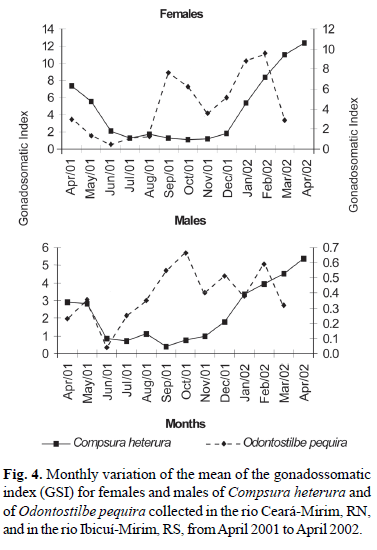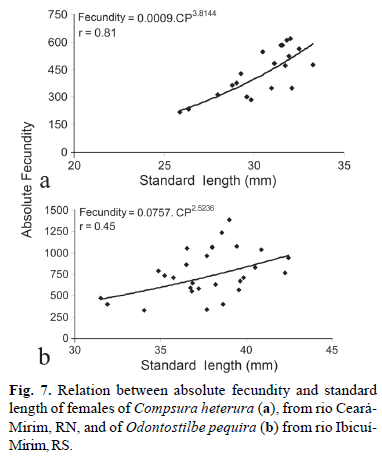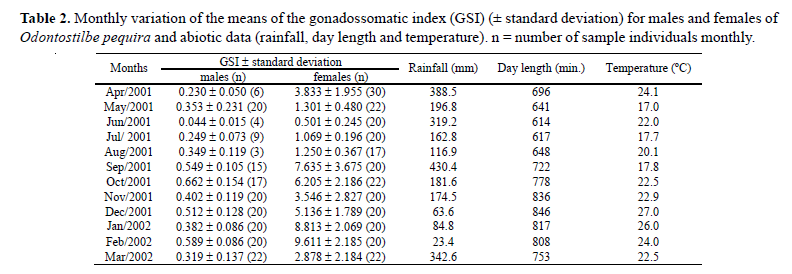The reproductive period and fecundity of the inseminating cheirodontine Compsura heterura and of the externally fertilizing cheirodontine Odontostilbe pequira, from tropical and subtropical regions of Brazil, respectively, are described. The reproductive period of C. heterura lasted from January to April 2002, while O. pequira showed two reproductive periods, the first during September and October 2001 (spring), and the second between January and February 2002 (summer). Smaller classes of SL of females of O. pequira predominated in the second reproductive period, suggesting individuals born in the first period become shortly sexually mature, participating in the second reproductive period. In C. heterura, from a tropical region, temperature showed significant correlations with the variation in the gonadosomatic index (GSI) for both sexes, and rainfall showed significant correlation with the variation in the GSI only for females. In O. pequira, from a subtropical region, photoperiod was the only factor that showed significant correlations with the GSI variation in both sexes. The mean relative fecundity of C. heterura was 0.55 oocytes per milligram of total weight, similar to that of other cheirodontines with external fertilization, refuting the hypothesis, at least in Cheirodontinae, that insemination provides diminishing energy expenditure for the production of oocytes, due to a greater probability of fertilization. The mean relative fecundity of O. pequira was 0.8 oocytes per milligram of total weight, the largest known among cheirodontines. Spermatozoa were found inside the ovaries of maturating, mature and semi-spent females of C. heterura supporting the hypothesis of temporal separation between courtship and spawning. The largest relative weight of testis and the presence of sperm in maturing ovaries outside the reproductive period in C. heterura support the hypothesis that males of inseminating species make a greater investment in gonadal development than those externally fertilized.
Inseminating; Compsurini; Cheirodontini; Compsura heterura; Odontostilbe pequira














